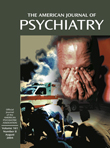C-Reactive Protein and Serotonin Syndrome
Mr. A was a 53-year-old hypertensive man who was hospitalized for depression. Mr. A was given a prescription for fluoxetine; his outpatient psychotropics—clonazepam, tramadol, and trazodone—were continued. On hospital day 6, Mr. A became acutely confused and had visual hallucinations, gastrointestinal distress, fever, tachycardia, edema, and a fine petechial rash of the lower extremities. Infection or vasculitis was considered, given the rash and abdominal symptoms. A computerized tomography scan of his head, magnetic resonance imaging, and magnetic resonance angiography were negative for a cerebrovascular accident and vasculitis. An EEG twice gave normal results. Other normal laboratory results included a lumbar puncture, two negative qualitative serum antinuclear antibody levels, a cardiac enzyme level, a CBC, comprehensive serum chemistries, and coagulation studies. However, Mr. A’s C-reactive protein was elevated, at 19.2 mg/dl (normal=0 to 0.6 mg/dl). Serotonin syndrome was diagnosed, with symptoms consistent with this and multiple medications with serotonergic activity. Fluoxetine, tramadol, and trazodone were discontinued, and the serotonergic blocker cyproheptadine was begun. By hospital day 22, free of symptoms of serotonin syndrome, Mr. A’s C-reactive protein level was 9.6 mg/dl. Three months later, he remained well, and his C-reactive protein level was 1.7 mg/dl.
References
Information & Authors
Information
Published In
History
Authors
Metrics & Citations
Metrics
Citations
Export Citations
If you have the appropriate software installed, you can download article citation data to the citation manager of your choice. Simply select your manager software from the list below and click Download.
For more information or tips please see 'Downloading to a citation manager' in the Help menu.
View Options
View options
PDF/EPUB
View PDF/EPUBGet Access
Login options
Already a subscriber? Access your subscription through your login credentials or your institution for full access to this article.
Personal login Institutional Login Open Athens loginNot a subscriber?
PsychiatryOnline subscription options offer access to the DSM-5-TR® library, books, journals, CME, and patient resources. This all-in-one virtual library provides psychiatrists and mental health professionals with key resources for diagnosis, treatment, research, and professional development.
Need more help? PsychiatryOnline Customer Service may be reached by emailing [email protected] or by calling 800-368-5777 (in the U.S.) or 703-907-7322 (outside the U.S.).

